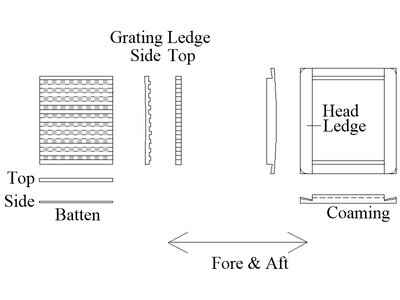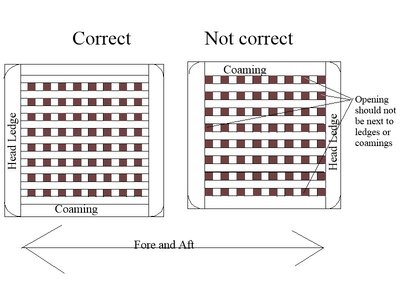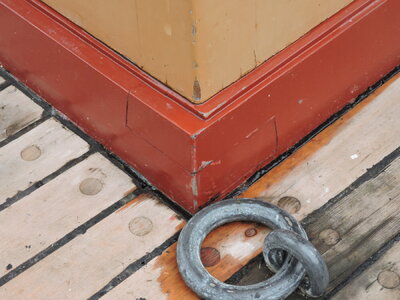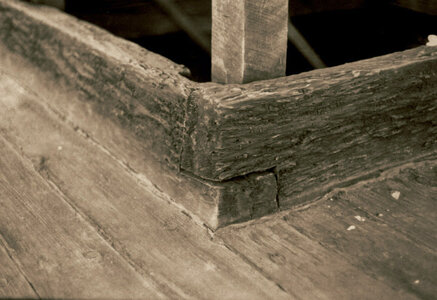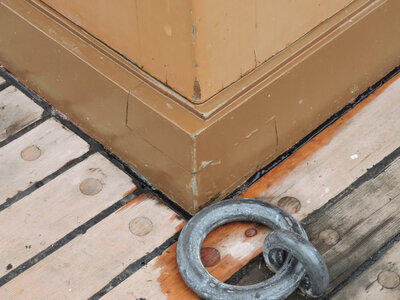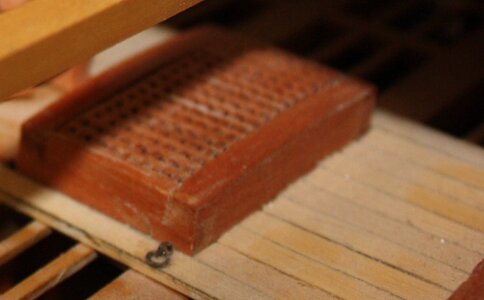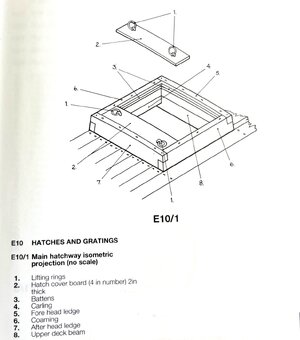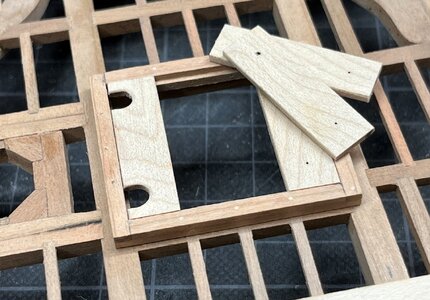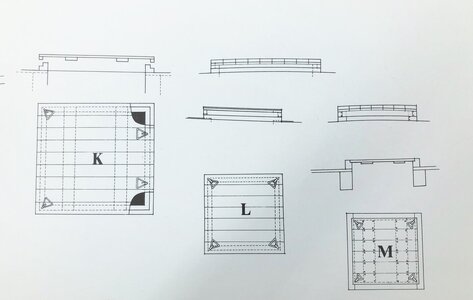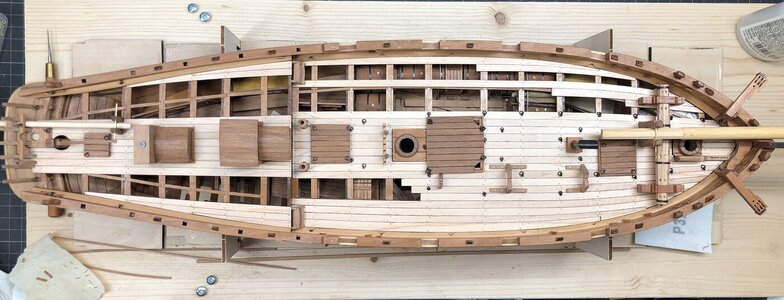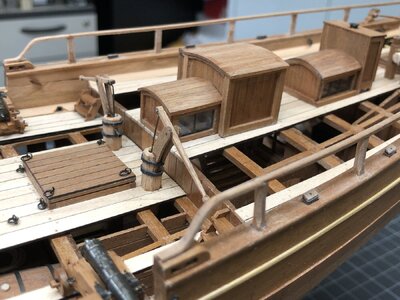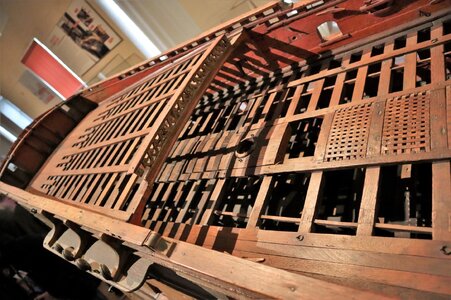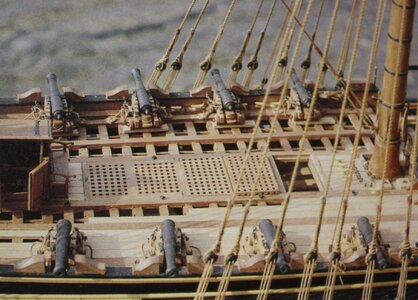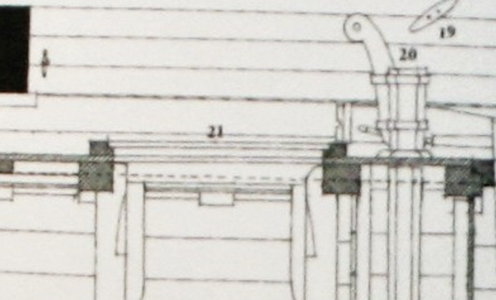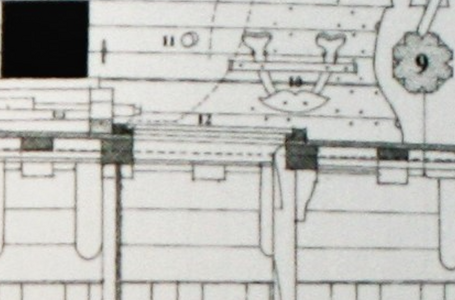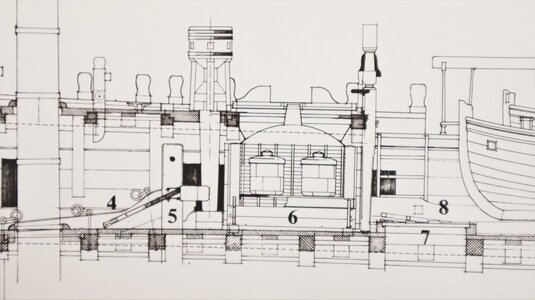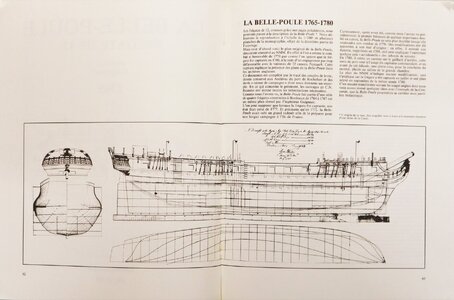Hi Kurt,
The drawings having the coamings on the deck planks by Boudroit is easier to do on a model than having them on the beams and carlings and planking around them but I wonder if this was just his own idea or based on contemporary plans. From a practical standpoint the coamings and head ledges would have to be removed to repair/replace damaged planking so a major undertaking. Looking at contemporary French models, they do not look like this from what I can find. There are a lot of fantastic photos of contemporary models from France that you posted here at MSW that show gratings laying on the beams and carling, not the deck planks. Then again, the models do not appear to have coamings or head ledges at all, just the gratings and adjacent strakes of deck planks.
https://shipsofscale.com/sosforums/threads/marine-museum-rochefort-france-musÉe-de-la-marine-rochefort.2628/. Two of your photos follow from your post #4.
Frolich shows the same construction as the contemporary model on his models, including on page 120 of
The Art of Ship Modeling , the
Belle Boule, in the last picture below.
Perhaps the methods varied with time just as with so many things that changed with the RN ships construction.
Allan
View attachment 461312View attachment 461311
View attachment 461313







